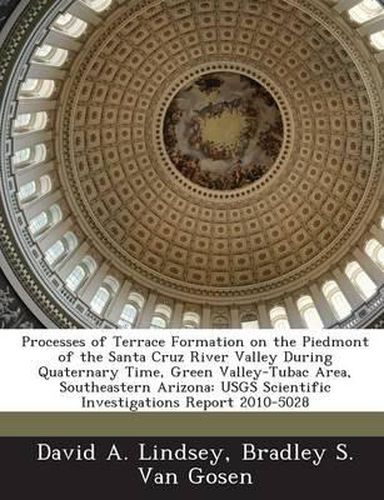Readings Newsletter
Become a Readings Member to make your shopping experience even easier.
Sign in or sign up for free!
You’re not far away from qualifying for FREE standard shipping within Australia
You’ve qualified for FREE standard shipping within Australia
The cart is loading…






In this report we describe a series of stepped Quaternary terraces on some piedmont tributaries of the Santa Cruz River valley in southeastern Arizona. These terraces began to form in early Pleistocene time, after major basin-and-range faulting ceased, with lateral planation of basin fill and deposition of thin fans of alluvium. At the end of this cycle of erosion and deposition, tributaries of the Santa Cruz River began the process of dissection and terrace formation that continues to the present. Vertical cutting alternated with periods of equilibrium, during which streams cut laterally and left thin deposits of channel fill. The distribution of terraces was mapped and compiled with adjacent mapping to produce a regional picture of piedmont stream history in the middle part of the Santa Cruz River valley. For selected tributaries, the thickness of terrace fill was measured, particle size and lithology of gravel were determined, and sedimentary features were photographed and described. Mapping of terrace stratigraphy revealed that on two tributaries, Madera Canyon Wash and Montosa Canyon Wash, stream piracy has played an important role in piedmont landscape development. On two other tributaries, Cottonwood Canyon Wash and Josephine Canyon Wash, rapid downcutting preempted piracy.
$9.00 standard shipping within Australia
FREE standard shipping within Australia for orders over $100.00
Express & International shipping calculated at checkout
In this report we describe a series of stepped Quaternary terraces on some piedmont tributaries of the Santa Cruz River valley in southeastern Arizona. These terraces began to form in early Pleistocene time, after major basin-and-range faulting ceased, with lateral planation of basin fill and deposition of thin fans of alluvium. At the end of this cycle of erosion and deposition, tributaries of the Santa Cruz River began the process of dissection and terrace formation that continues to the present. Vertical cutting alternated with periods of equilibrium, during which streams cut laterally and left thin deposits of channel fill. The distribution of terraces was mapped and compiled with adjacent mapping to produce a regional picture of piedmont stream history in the middle part of the Santa Cruz River valley. For selected tributaries, the thickness of terrace fill was measured, particle size and lithology of gravel were determined, and sedimentary features were photographed and described. Mapping of terrace stratigraphy revealed that on two tributaries, Madera Canyon Wash and Montosa Canyon Wash, stream piracy has played an important role in piedmont landscape development. On two other tributaries, Cottonwood Canyon Wash and Josephine Canyon Wash, rapid downcutting preempted piracy.